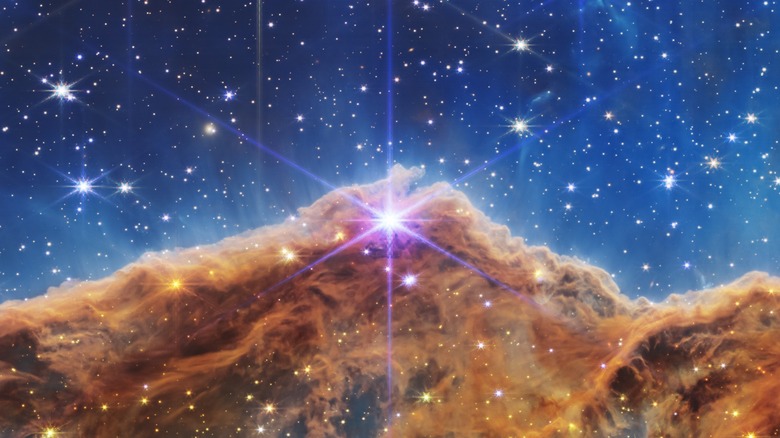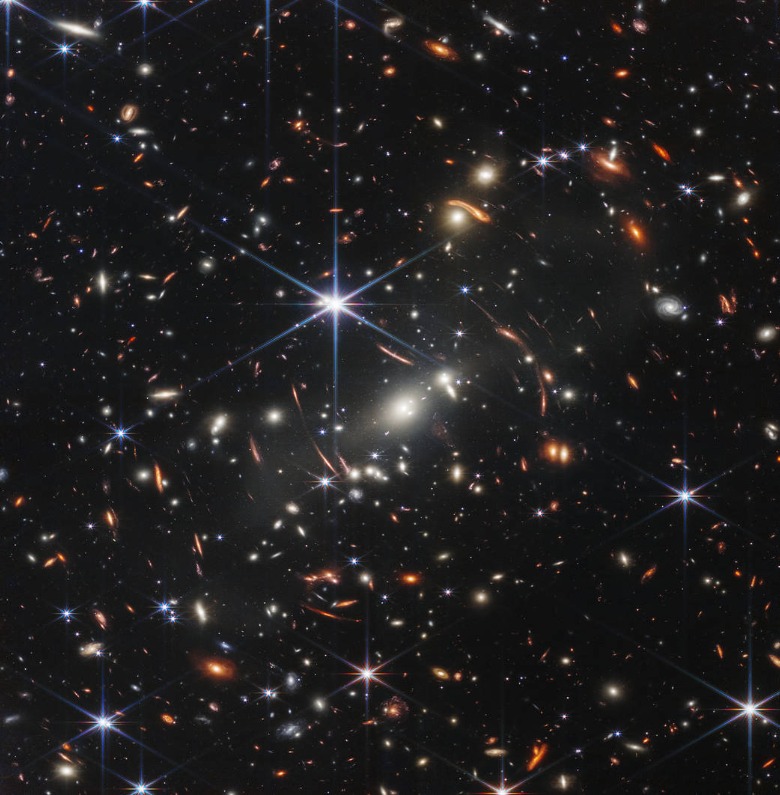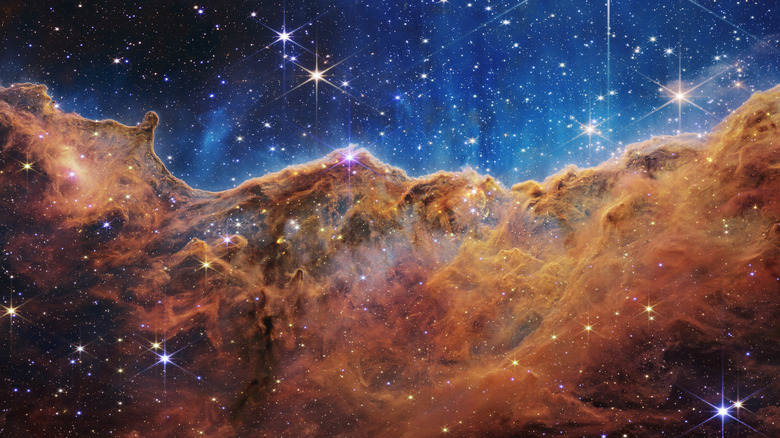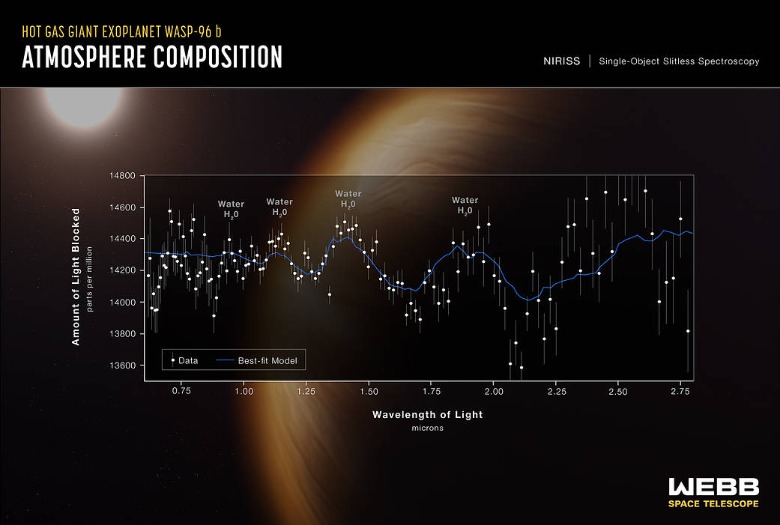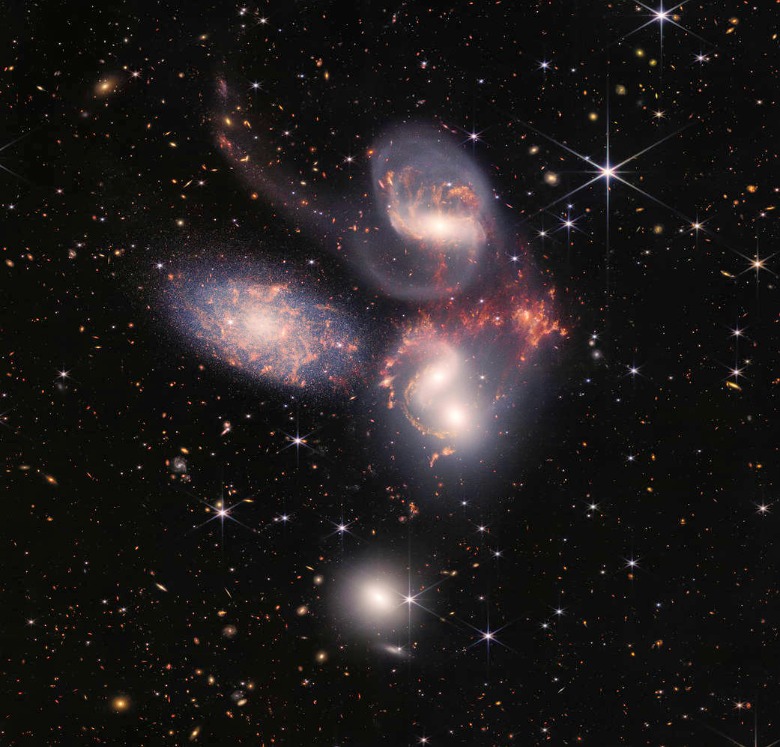Here Are The First Images From The James Webb Space Telescope
We've technically already had our first look at the much-improved images the James Webb Space Telescope can produce, but why stop and just one mind-blowing photo that makes you question the nature of the universe and your place in it? Wouldn't it be even cooler to have several new photos to look at?
The first image captured by the James Webb Space Telescope and delivered by NASA to the public was code-named SMACS 0723. This image kicked everything off with a bright, colorful, high-definition look at a massive star field. Except it didn't just show a field of stars — it showed a whole lot of galaxies, too. Many of those bright specs of light represent a cluster of thousands (or more) independent solar systems, each with its own planets and moons. And according to NASA, without the new telescope, the view would be more like someone trying to look at a single grain of sand being held out at arm's length.
If you held a grain of sand up to the sky at arm’s length, that tiny speck is the size of Webb’s view in this image. Imagine â€" galaxies galore within a grain, including light from galaxies that traveled billions of years to us!
— NASA Webb Telescope (@NASAWebb) July 11, 2022
But again, that was just how things started for the James Webb Space Telescope. NASA has since shared additional imagery and data that should throw you for a loop.
What else can I view?
Another image shows Carina Nebula, like a range of ghostly mountains made of dragon's breath. The warm colors are actually the edges of a star-forming region called NGC 3324. The peaks of this celestial gas cavity are estimated to be about seven light-years high. This is several times the length of our own solar system.
NASA also revealed its WASP-96b spectrum data that isn't so much a beautiful photo of a far away planet as it's a graph full of data recorded from one such distant planet. What's cool about this is it shows that the new hardware is capable of more than just snapping detailed pictures — it can also take detailed environmental readings of planets outside our own solar system, right down to picking up evidence of haze and clouds.
Put a ring on it! 💍
Compare views of the Southern Ring nebula and its pair of stars by Webb’s NIRCam (L) & MIRI (R) instruments. The dimmer, dying star is expelling gas and dust that Webb sees through in unprecedented detail: https://t.co/tlougFWg8B #UnfoldTheUniverse pic.twitter.com/yOMMmQcAfA
— NASA Webb Telescope (@NASAWebb) July 12, 2022
The imagery of the Southern Ring Nebula presented by the James Webb Space Telescope not only shows the dying star in greater detail but also revealed a second dying star that hadn't been seen before. While Stephan's Quintet provides a cool visual of multiple galaxies interacting with each other and setting off new star formations.
The James Webb Space Telescope was launched in December of 2021, and it's already delivered images and data that prove the worthiness of the project, right from the get-go. Even the test images have been beautiful and engaging.
